The Arts and Culture Building Boom
Symphony, Ballet, Discovery World and Art Museum expansions transforming the city.
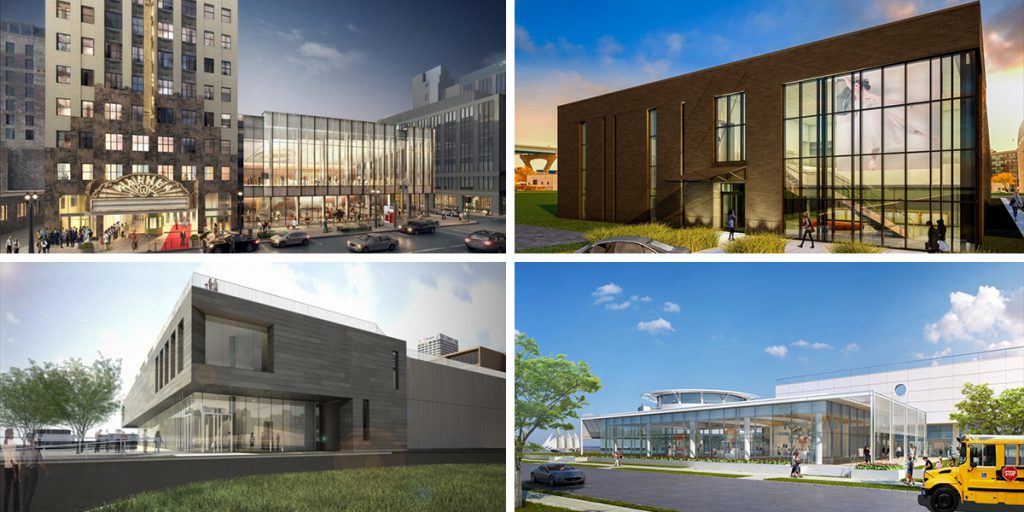
New Arts & Culture Buildings in Milwaukee. Renderings by Kahler Slater, HGA, Eppstein Uhen Architects
The greater downtown building boom extends to more than new apartment complexes. Four of the city’s largest arts and culture organizations are in the process of constructing new buildings or additions. A number of other major projects are waiting in the wings.
The most notable project is without a doubt the Milwaukee Symphony Orchestra‘s $80 million plan to transform the empty Warner Grand Theatre into a music hall. But that’s far from the only thing going on.
The Milwaukee Ballet is planning a move to the Historic Third Ward. Discovery World is building an addition. And last, not but least, the Milwaukee Art Museum recently completed an addition and is planning to improve O’Donnell Park.
Two other projects are in their early stages. VISIT Milwaukee and the Wisconsin Center District are planning a $200 million expansion of the convention center and the Milwaukee Public Museum is in the early stages of planning an entirely new building.
Representatives of the groups presented updates on their projects to members of the Greater Milwaukee Committee, many of whom are donors to the various efforts, Monday afternoon at the University Club.
Discovery World Ramping Up
Joel Brennan, CEO of Discovery World, detailed the plans to expand and transform the organization’s lakefront science and technology center. A 10,000-square-foot addition to the 120,000-square-foot building is scheduled to open at the end of July, and will host events, traveling exhibits and visiting groups. But that isn’t all the organization is transforming at its 12-year-old building.
“There are changing needs in the community. We need to always be adapting,” Brennan told the audience. To that end, the organization is converting one of the two theaters in the complex into a 5,000-square-foot energy exhibit sponsored by We Energies. The new exhibit is scheduled in October and will be joined shortly thereafter by a new public space carved out of a formerly private employee office space.
A Sustainable Symphony
Andy Nunemaker, a healthcare entrepreneur who has led the $120 million fundraising effort for the symphony’s new building and endowment, laid out the vision for a world-class, sustainable symphony. The organization faced a $3.5 million annual structural deficit according to Nunemaker, and initiated the campaign to reinvent how the symphony operates. The dedicated building, allowing the symphony to control its schedule, is planned to yield the organization an additional $2 million in annual income. Creating a more substantial endowment is planned to yield $1 million annually. And the final piece of the puzzle is stabilizing the employee pension fund, which will save an estimated $700,000 annually.
Referencing the high cost of new music halls in other cities versus the cost to renovate a historic theater, Nunemaker told the audience: “We are getting a bargain and killing three birds with one stone.”
A Moving Ballet
The Milwaukee Ballet has approved plans for a new building, but the organization is still raising the funds necessary to build it.
Slated for construction in an empty lot at the south end of N. Jackson St., the building plan is being led by board member Justin Mortara and his wife Susanna along with Donald and Donna Baumgartner and Bud and Sue Selig.
Mortara, who serves on the board of the organization, did not provide an updated timeline for the project.
A Bigger Art Museum
Yes, the Milwaukee Art Museum has already opened its new addition, but more changes are coming. The organization has a goal of “one impressive campus that bridges the lakefront with downtown,” says director Marcelle Polednik.
They’ve achieved the lakefront campus, having opened the East Addition in late 2015. The $34-million, 150,000-square-foot expansion and renovation allows the museum to display 1,000 more pieces of art. It also adds a new entrance and cafe on the northeast corner of the facility and better engages the museum with the lake.
But the next project the museum must tackle is better connecting its campus with Downtown. A pedestrian bridge connects the iconic Calatrava-designed Quadracci Pavilion to the drab O’Donnell Park and E. Wisconsin Ave. Now the museum is doing the little things to improve the parking garage, which it acquired in late 2017. They’re also dreaming up plans for what to do with the park on top, Polednik says, and intend to program the space to better facilitate the connection from downtown to the lake.
But that’s all the easy part. “The building of the building is one thing, the real work starts when you open the door.” To that end, the museum is focused on growing its endowment to sustain its operations.
Convention Center Plans
Omar Shaikh, chair of the VISIT Milwaukee board and head of the SURG Restaurant Group, gave a brief update to the GMC on the status of the $200 million plan to expand the convention center. Shaikh told the audience that the convention center is one-third the size of Milwaukee’s peers. “Right now we are turning down as much business as we are taking,” he proclaimed.
The convention center is the one project not reliant on philanthropic support to move forward, instead needing support from state government to levy new or increased taxes. According to Shaikh, those taxes, which include rental car, food and beverage and hotel taxes, aren’t paid in big part by Milwaukeeans. “It’s the visitors that pay for a lot of our infrastructure,” he told the audience. Shaikh and others have begun making the rounds in Madison to lobby for a mechanism to fund the expansion.
The restauranter said “it’s a scary time” in his industry and that an expanded convention center with more visitors would go a long way to address that. He said that 30 restaurants have closed in the city in the past year, including some that were perhaps inevitable, but others that took everyone by surprise.
So how important is an expanded convention center? “I believe from an economic standpoint it’s more valuable than the new arena,” said Shaikh.
Other Projects
Representatives from the Milwaukee Public Museum were not present, but the organization has plans to relocate the entire museum to a new facility. Museum president and CEO Dennis Kois recently revealed that the $150 million plan includes building a new four-story building that fills an entire city block.
Kois reportedly has renderings, according to the BizTimes, which would indicate the plan likely has a site selected. Where in Downtown will the new museum go? Kois says they’ll unveil the location in the next 12 months, but there are only a handful of parcels that could realistically fit as described. Will the museum announce before the media figures it out?
Meanwhile, work continues on the privately-funded No Studios film hub in The Brewery and the Milwaukee Film Festival‘s takeover of the Oriental Theatre.
Why Now?
What’s causing all of these projects to happen at about the same time? Besides a booming stock market, which undoubtedly makes it easier to fundraise, changing demographics and a need to attract new audiences are also factors.
“Let’s face it, this is about innovation,” Mortara told the audience. He went on to note: “the generosity of this city is incredible.”
Yet, strategically how organizations fundraise has changed. Owing to a long history of corporate support, “we never thought about pure endowment,” said Nunemaker. Now virtually every organization raising money for a shiny new building wants to make sure it has healthy dividends from an endowment to help keep the lights on.
How Vibrant is Milwaukee’s Arts & Culture Scene?
United Performing Arts Fund CEO Deanna Tillisch moderated the discussion and provided an update on a recent study of Milwaukee’s arts and culture community. The National Center for Arts Research scored Milwaukee County a 77 out of 100, or a “C” as Tillisch put it, but the metrics that make up that score tell drastically different stories.
The city had high scores for the number of independent arts, culture and entertainment firms (95) and the number of people employed in the sector (93), but scored only a 23 for the number of independent artists and a 58 for the number of arts organizations.
Milwaukee fared much better on two other metrics. Demand for arts and culture put Milwaukee at 97 out of 100, and government support at 86, buoyed by high scores for federal funds.
Tillisch pushed for cohesion among the many organizations and individuals working in the sector. Imagine MKE, an effort to achieve just that, is being chaired by Katie Heil and Grady Crosby. So stay tuned, Tillisch told the audience.
If you think stories like this are important, become a member of Urban Milwaukee and help support real independent journalism. Plus you get some cool added benefits, all detailed here.
Eyes on Milwaukee
-
Church, Cupid Partner On Affordable Housing
 Dec 4th, 2023 by Jeramey Jannene
Dec 4th, 2023 by Jeramey Jannene
-
Downtown Building Sells For Nearly Twice Its Assessed Value
 Nov 12th, 2023 by Jeramey Jannene
Nov 12th, 2023 by Jeramey Jannene
-
Immigration Office Moving To 310W Building
 Oct 25th, 2023 by Jeramey Jannene
Oct 25th, 2023 by Jeramey Jannene


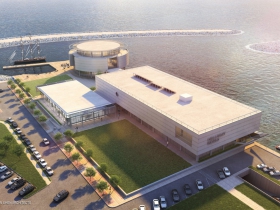
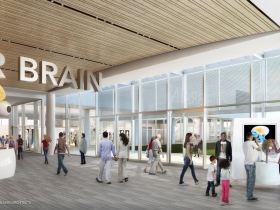
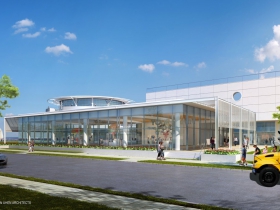
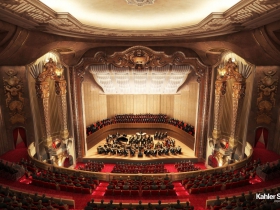
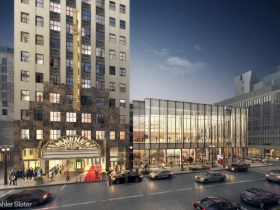
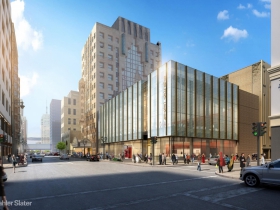
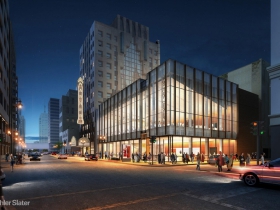
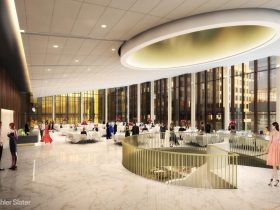
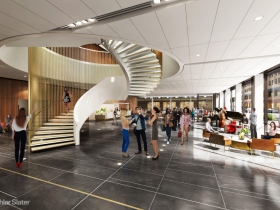
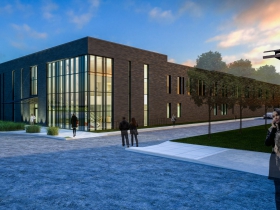
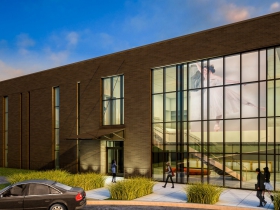
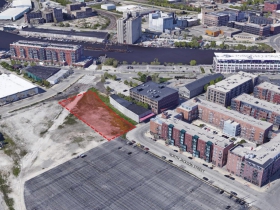
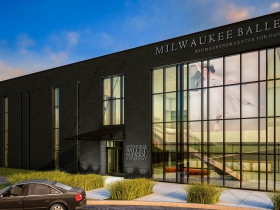
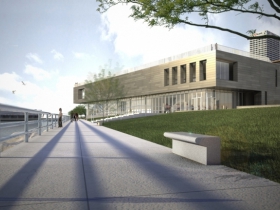
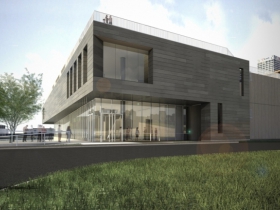
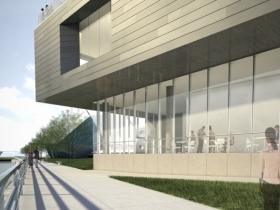
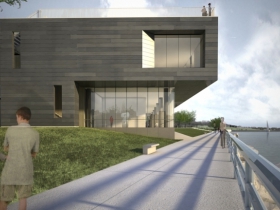















The convention center is already a megalithic building – it takes up 4 city blocks! The idea that it’s undersized is completely preposterous. If anything, it’s considerably out-of-scale for our city.
Just because they operating with a slush fund doesn’t mean we shouldn’t push them to do something great. We have a once in a generation opportunity to make investments into the tourism future in SE Wisconsin; doubling down on tired convention center tropes is just a total waste not just of money, but of the vibrancy of core of our city. Clearly having so many city blocks taken up by buildings that are functionally dead 90% of the time is sapping the vibrancy out of westtown.
Everything else is great, though.
@Michael – It’s possible that expanding the convention center could actually help fix that problem. Activating the Kilbourn Ave side could transform the connection between the arenas and Wisconsin Ave.
https://urbanmilwaukee.com/2010/05/24/rethinking-and-expanding-milwaukees-frontier-airlines-center/
I am pretty doubtful. 1. 20+ years of parking lot/land banking on Kilbourn is one of the specific reasons I am very suspicious of them. That should be our Champs Elysees, but they put a parking lot on it. That’s pretty clueless and shows a tremendous lack of understanding for what their building is in the context of a city neighborhood. Similarly, the lighting on Wells under the building is dreadful – repulsive to pedestrian activity. 2. Even if they build an interesting facade up to Kilbourn, the convention programming is still totally sporadic. None of it is supports the activities that residents actually enjoy in cities: taking strolls, finding unique places, good paying jobs. Instead, it makes a bloated building even bigger (at great public expense) and possibly supports some chain dining options & a hotel. That’s a heck of a lot of money to spend to get such dismal returns.
IMO they should sell the Kilbourn lot immediately for redevelopment – a parking lot there is the lowest & worse use. Then simply rent space in the numerous skywalk-connected buildings in westtown for break outs if in fact there is an occasional space shortage. Then take the $200M that they have burning in their pockets and actually invest that into winning the conventions that fit the space we have. Their calendar is 2/3rds empty. But that’s just my two cents.
As for the location, for the new Milwaukee Public Museum, “Wisconsin Museum of Natural History,” or whatever they’re going to call it. I’m still holding out that it occupies the block that is currently home to the Journal Sentinel. Something of that scale is a part of the City’s long-range plan and fits well into the “catalytic vision” for that block. I hope the museum would accommodate additional uses on the block, perhaps including residential, office or hotel.
An interesting alternative the Marcus center parking structure site. I’m assuming that is County-owned land, though someone else might know better. All I know is that there has been talk for years about doing something there. Again, part of the City’s same vision for that area as the Journal Sentinel site.
— the parking lot at 6th and State is possible, but I think too out of the way.
— The 4th and Wisconsin site could be a dark horse contender, but probably more suitable ofr other uses. (I’d love to see that parking structure come down!)
The last option could be the “block” just north of the Summerfest north entrance, due west of Discovery World. I’m not in favor of this (too crowded for me) but it would create the museum campus option the MP mentioned last year, before suggesting that they may well be committed to a site west of the river.
RE: the Museum site; The Bradley Center is scheduled to be razed, following the opening of the new arena this summer, leaving the square-block site vacant at the end of 2019. Fundraising and design for a new museum would not be complete until that time, at the earliest; it would most probably take longer than that, even without another financial crash, which is not unthinkable, given the removal of the regulatory safeguards instituted after the last crash.
The design for the Milwaukee Ballet building is completely uninspired and I’m not quite sure why the organization felt that this parcel was the right location for this project. I desperately want to see this area urbanize, but I believe the building as planned will hinder progress instead of inspire it.
The Third Ward’s Comprehensive Plan advocated for extending Corcoran and Menomonee east and Jackson south, as well as building a new section of Van Buren extending south from the ICC. The intent was to create an Italian village-like streetscape and urban layout. The planned street layout should be prioritized and construction before further development.